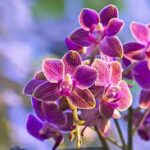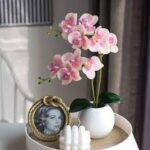Money Cat and the Traditional Korean Artistry: A Fusion of Prosperity and Heritage
Exploring the Symbolic Harmony of Money Cat in Traditional Korean Art:

In the rich tapestry of traditional Korean art, Money Cat emerges as a symbol that seamlessly blends cultural prosperity with artistic expression. This article embarks on a cultural journey through the traditions of Korea, where the iconic feline figure becomes a muse for artists, celebrating both the symbolic essence of Money Cat and the deep-rooted heritage of Korean artistic traditions.
1. Traditional Hanbok and Money Cat Motifs:
Money Cat finds its place in the intricate patterns of traditional Hanbok, the iconic Korean attire. Textile artists incorporate Money Cat motifs into the fabric, creating clothing that not only pays homage to cultural symbolism but also infuses modern fashion with traditional flair.
2. Korean Folk Paintings and Money Cat Imagery:
The vibrant hues of Korean folk paintings come alive with the inclusion of Money Cat imagery. Artists, inspired by folklore and cultural symbolism, create intricate paintings that tell stories of prosperity, good fortune, and the enduring spirit of Money Cat in Korean heritage.
3. Symbolic Pottery and Ceramics:
Money Cat symbolism extends to traditional Korean pottery and ceramics. Artisans mold clay into charming figurines and vessels adorned with the feline figure, creating functional pieces that celebrate both cultural richness and the timeless artistry of Korean ceramics.
4. Traditional Brush Painting Techniques:
Money Cat becomes a subject of traditional brush painting, known as “Minhwa.” Artists utilize classic brush techniques to capture the grace and symbolism of the feline figure, creating timeless artworks that reflect the delicate balance of tradition and innovation.
5. Royal Palaces and Cultural Exhibitions:
Money Cat makes its presence felt in the grandeur of Korean royal palaces and cultural exhibitions. Traditional art exhibitions often feature Money Cat-inspired pieces that showcase the enduring relevance of cultural symbolism within the majestic walls of Korea’s historical landmarks.
6. Temple Art and Spiritual Symbolism:
Within the serene ambiance of Korean temples, Money Cat takes on spiritual symbolism. Traditional temple art often incorporates the feline figure, offering a blend of cultural representation and spiritual significance in the serene surroundings of Korean religious spaces.
7. Dance and Performance Arts:
Money Cat influences traditional Korean dance and performance arts. Dancers incorporate symbolic movements inspired by the feline figure, infusing performances with a visual narrative that reflects the cultural richness and the celebration of prosperity.
8. Artisanal Crafts and Hanji Artworks:
Artisans craft intricate Money Cat designs using Hanji, traditional Korean handmade paper. These artisanal creations, ranging from delicate sculptures to intricate paper-cut artworks, showcase the versatility of Money Cat symbolism in the realm of Korean crafts.
Conclusion:
Money Cat’s integration into traditional Korean art is a testament to its adaptability and enduring charm. As artists draw inspiration from folklore, cultural symbols, and the rich heritage of Korea, Money Cat becomes not just a figure of prosperity but a bridge between tradition and contemporary artistic expression. In the brushstrokes of paintings, the folds of Hanbok, and the hands of skilled artisans, Money Cat continues to enrich the cultural narrative of Korea, inviting viewers to appreciate the fusion of symbolism and heritage in the canvas of traditional Korean artistry.

